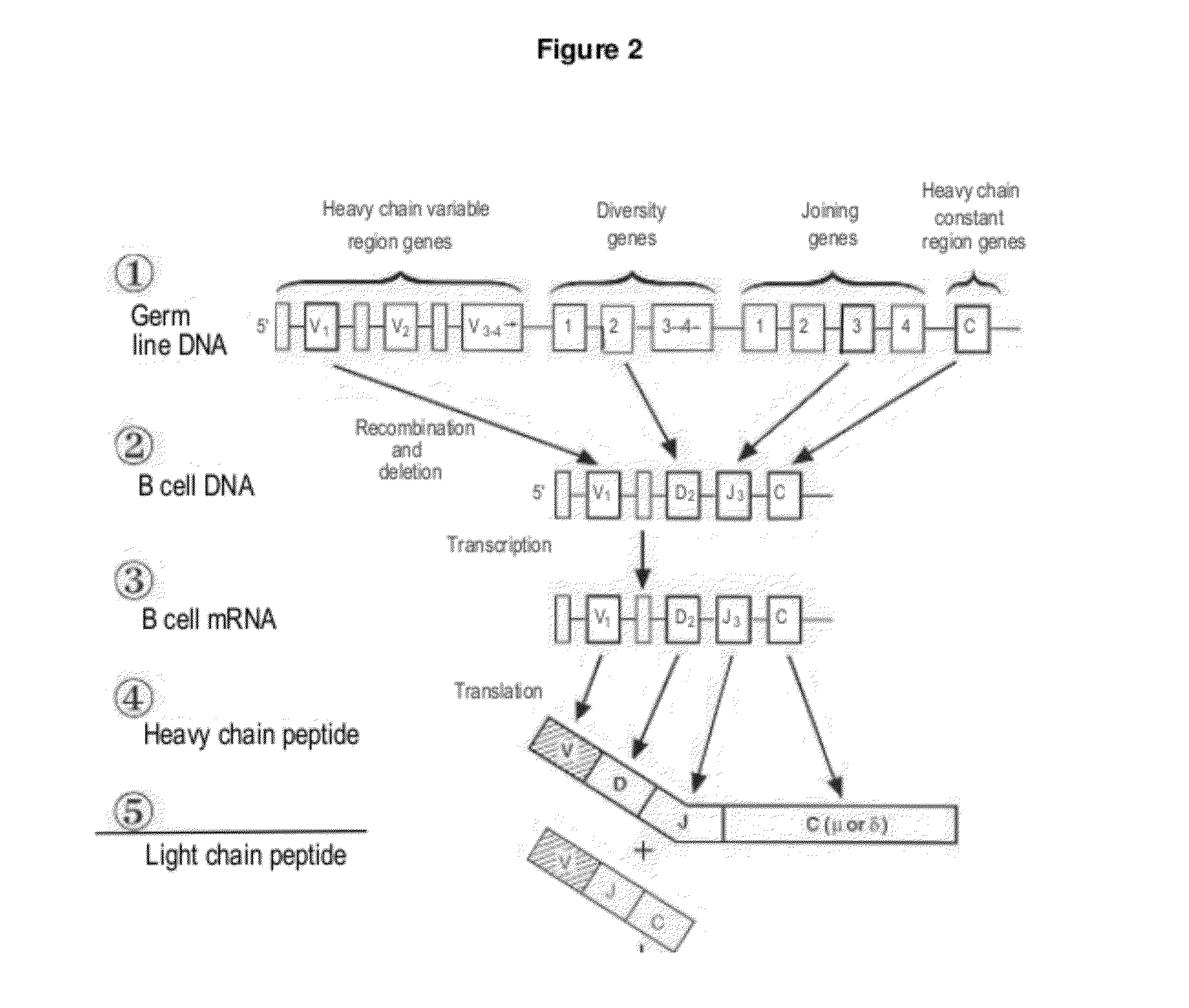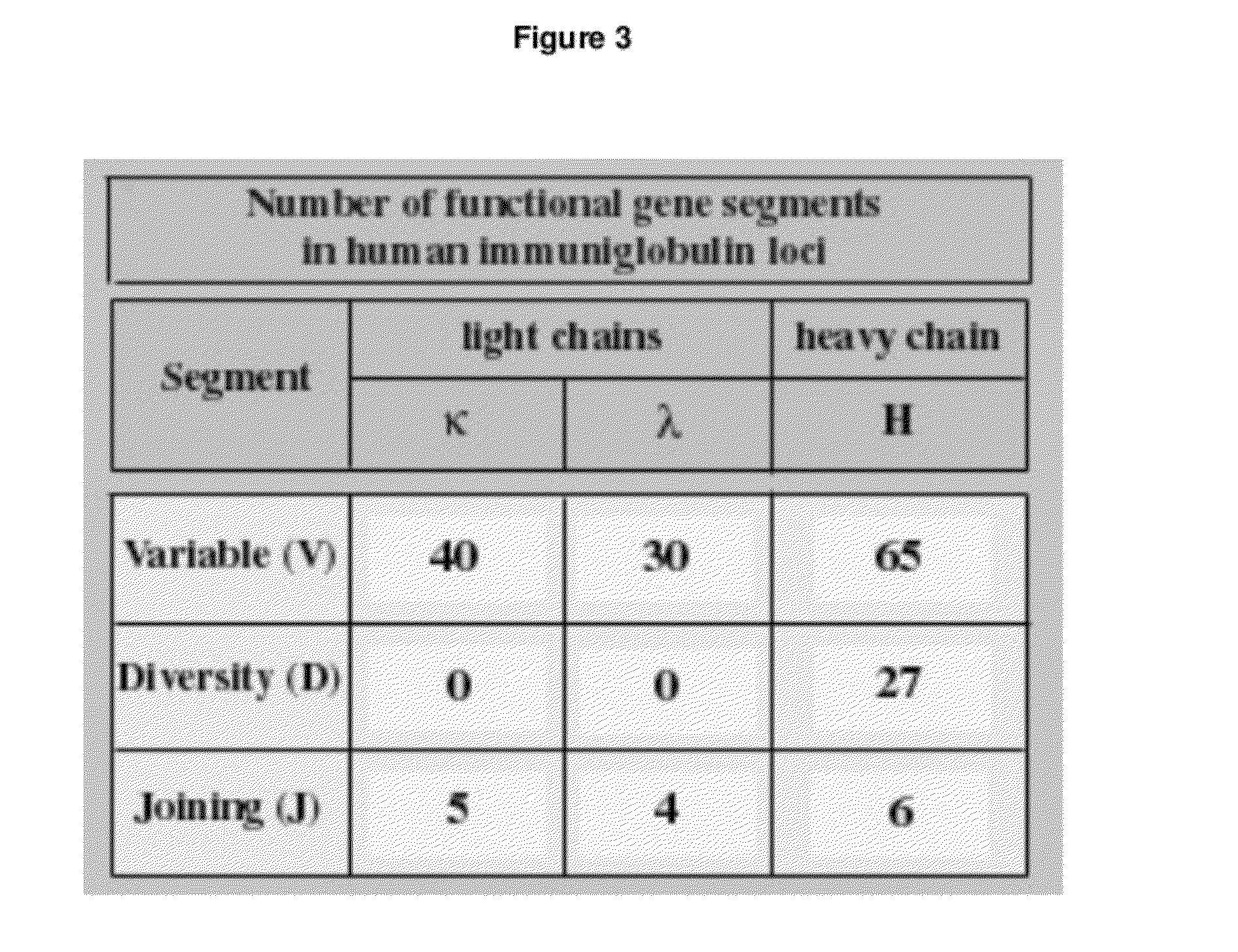Human Antibodies Cross-Reacting With A Bacterial And A Self Antigen From Atherosclerotic Plaques
a technology of human antibodies and atherosclerosis plaques, applied in the field of new oligoclonal antibodies, can solve the problems of platelet accumulation and activation, and introduce a new level of complexity to the analysis
- Summary
- Abstract
- Description
- Claims
- Application Information
AI Technical Summary
Problems solved by technology
Method used
Image
Examples
example i
Preparation of Mab Minilibrary form the Coronary Plaque
[0508]The preparation of cDNA of Fab libraries from atherosclerotic plaques has been described in WO2009 / 037297.
[0509]Briefly: a sufficient amount of tissue (usually about 1-2 mg) was obtained from the atherosclerotic plaque from a number of patients with acute coronary syndrome and undergoing coronary atherectomy, and stored in liquid nitrogen, with the patient's informed consent.
[0510]The tissue was homogenized and the total mRNA was extracted according to conventional methodologies using a commercial kit for the extraction of mRNA.
[0511]Reverse transcription of mRNA was performed using a commercial kit for the retrotranscription of mRNA. The cDNA synthesis is performed according to standard procedures from the total mRNA primed with oligo(dT).
[0512]1 μl of cDNA was used for polymerase chain reaction. Reverse primers were designed in order to anneal to the segments of sequences coding for the constant region of heavy and light...
example ii
Phage Display Libraries Selection by Biopanning on Cell, Carotid or Bacterial Lysates
[0514]Hep-2 (ATCC no CCL-23) cell lysates were prepared growing the cells in E-Mem (Invitrogen 0820234DJ) supplemented with antibiotic / antimycotic Solution (Invitrogen, Antibiotic / Antimycotic Solution, liquid 15240-062) and 10% FBS. Cells were regularly split 1:10 every five days. Five million cells were washed in PBS al lysed by using RIPA buffer (50 mM Tris HCl pH8+150 mM NaCl+1% NP-40+0.5% NA deoxycholate+0.1% SDS).
[0515]Carotid lysates were prepared from a portion (10 g) of human atherosclerotic carotid plaque obtained as described above. Carotid plaques were immersed in RIPA buffer and homogenized with Tissue ruptor (Qiagen).
[0516]Bacterial cell lysates were carried out inoculating a colony or a scratch in 10 ml of SB and growing bacteria at 37° C. overnight. Cultures of Staphylococcus aureus, Proteus mirabilis, Klebsiella pneumoniae, Enterococcus cloacae, Streptococcus pyogenes, Neisseriae gon...
example iii
Sequencing
[0522]Clones obtained according to the biopanning procedure carried out as described in Example II and XIII for libraries derived from different coronary plaques, were sequenced for quantitative and qualitative analysis and sequencing by Big Dye chemistry and analyzed using ABI PRISM 3100 sequencer.
[0523]Screening of the minilibrary from a coronary plaque (IDNo 11: ID11LIB) provided for a heavy chain corresponding to SEQ ID NO: 1 (SEQINO:285) and coding for the amino acidic sequence corresponding to SEQ ID NO: 2 (SEQINO:286). The light chain correspond to SEQ ID NO: 3 (SEQINO:337) and coding for the amino acidic sequence corresponding to SEQ ID NO: 4 (SEQINO:338).
PUM
| Property | Measurement | Unit |
|---|---|---|
| temperature | aaaaa | aaaaa |
| Optical Density | aaaaa | aaaaa |
| diameter | aaaaa | aaaaa |
Abstract
Description
Claims
Application Information
 Login to View More
Login to View More - R&D
- Intellectual Property
- Life Sciences
- Materials
- Tech Scout
- Unparalleled Data Quality
- Higher Quality Content
- 60% Fewer Hallucinations
Browse by: Latest US Patents, China's latest patents, Technical Efficacy Thesaurus, Application Domain, Technology Topic, Popular Technical Reports.
© 2025 PatSnap. All rights reserved.Legal|Privacy policy|Modern Slavery Act Transparency Statement|Sitemap|About US| Contact US: help@patsnap.com



